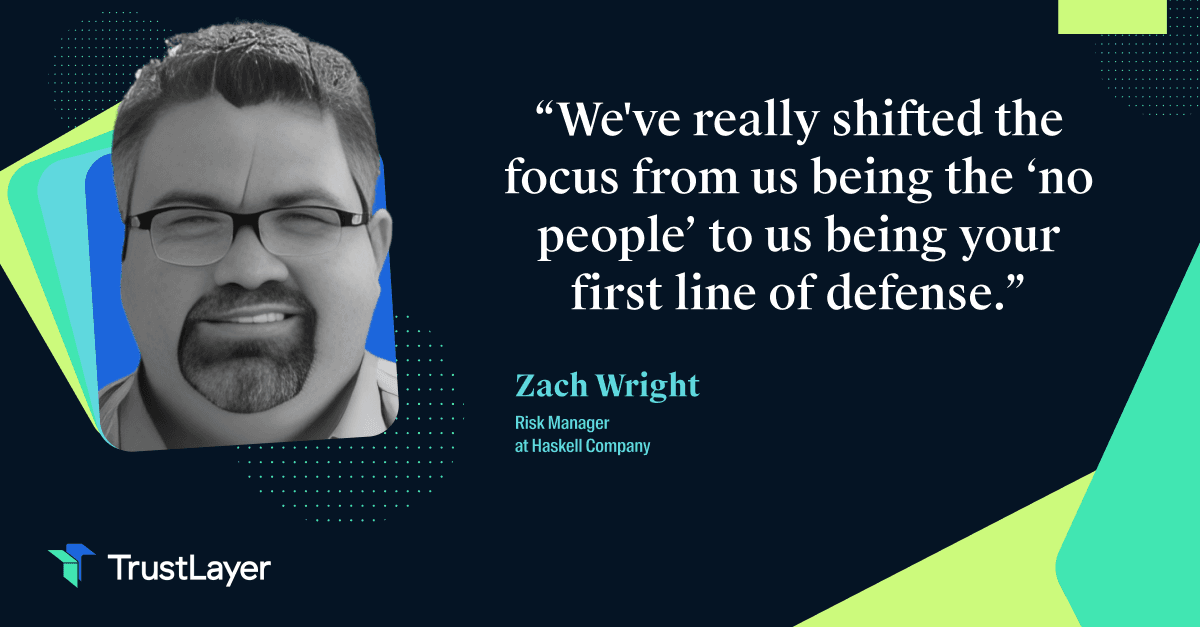"Additional insured" and "loss payee." Are there any other terms that stump risk teams more than these? While both are designated as beneficiaries under an insurance policy, they just so happen to have different functions. And, this is important as most landlords and property managers in the real estate industry, for example, request additional insured status on the general liability policy of a tenant without knowing how that can improve their financial standing.
To help clear the air, this article will describe the difference between loss payee and additional insured endorsements, as well as who should be covered.
What is a Loss Payee?
According to an insurance policy's declarations page, a loss payee is a third party with the first right of refusal to receive insurance claim payments. The insurer follows next. But, why is this the case? In short, it’s necessary to protect the loss payee's insurable interest in the property first.
Suppose a florist needs to take out a loan. Finance companies typically require borrowers to put up collateral for loan repayment, in this scenario the florist’s delivery truck. This way if the borrower defaults, the lender is permitted to repossess the vehicle.
What if the truck is damaged in an accident? It would make sense for the owner to file a claim with their commercial auto insurance provider. In theory, the vehicle could be written off for its full value without having to be repaired, and the loan could stop. This can be prevented if the finance firm requires the florist to declare it as a loss payee on the declarations page of its commercial auto insurance policy.
Loss payees must be notified when a claim for damage is filed. As part of the claim payment, the insurer must make the check payable to both the named insured (the florist) as well as the loss payee (the finance company). In order for the finance company to pay for repair work once it receives the check from the business owner, the loan needs to be verified with the business and the check must be endorsed back to the business owner.
How Loss Payee Works
When a policyholder has a claim, the loss payee must be paid first rather than the named insured. An insurance company would usually refer to a loss payee as any third party that is entitled to reimbursement. A loss payee is used most often in the auto insurance industry.
Financing a vehicle purchase requires having insurance secured on the asset. Without it, forced-placed insurance may be instituted. For their own protection, financial institutions issuing loans usually insist on being listed as loss payees on insurance policies.
Among the various components of an auto insurance policy is the loss payee section, which lists your lender's name and address. If you are using an insurance company that has multiple addresses, you must give the lender the exact address you want.
As soon as you purchase insurance for the covered vehicle, you should include a loss payee in the policy. The lender will usually ask you to verify insurance coverage. Having an insurance identification card alone will not suffice for this verification; it must be a declaration page.
On the declarations page, your lender will find the following information:
- Effective dates of the policies
- Vehicle identification number (VIN)
- Coverage of vehicles
- Loss payee listed correctly
Loss Payee Status Explained

Loss payees are notified regularly about the status of their insured interests. The lender is notified of all policy activities. In an auto insurance policy, for example, the loss payee section ties your insurer to your lender more than just directly.
In addition to you, you will be responsible for a claim check payable directly to the repair shop...or to the lender. The lender is the first to receive payment in case of a total loss.
By listing themselves as the loss payees, lenders are guaranteed to be compensated for their collateral, regardless of loss.
Essentially, this type of payment reduces the number of unpaid loans for the lender. It is likely that the lender will force place insurance on your collateral if you do not list your lender as a loss payee.
What Is a Loss Payee Clause?
Again, loss payees receive payments first from insurance policies and contracts when a claim is made. An insured person may receive payment, as well as a third party entitled to compensation.
An insurance company can reimburse the named party in the event of a loss if they are a loss payee. Most commonly, this concept is applied to auto and real-estate policies, although it can be applied to most policies that cover property at risk of damage.
When Does the Title of Loss Payee Matter?
When it comes to renting out real estate, there are two scenarios landlords must think about:
- Renters insure the structure or property while landlords own it.
- The tenant had insured the structure or property, but the landlord has no financial stake in the structure or property.
These situations require different approaches to how insurance policies are written.
In a commercial context, it makes sense that an insured party or a financial risk manager would request the title of loss payee on the policy. In the case of property financing, the lender could incur a loss in the event the property was damaged. In this sense, if you were listed as a loss payee it would reduce at least some of the risk that the damage caused.
However, if the landlord or property manager does not own any financial stake in the property, as explained in the second scenario, it is not necessary to list them as loss payee.
Is the Loss Payee Responsible for Filing a Claim?
In the event of a loss, the insured will usually file a claim. But, loss payees are responsible for filing claims if the insured party fails to submit proof of damage or loss in a timely manner.
What’s more, payments to the insured party and recovery party may be made separately by the insurer.
The Difference Between a Loss Payee and an Additional Insured

Insuring loss payees and additional insureds is possible. While they may seem the same, these two terms mean very different things.
Additional insureds can be either individuals or businesses whose liability has increased by engaging with another party. The other person or business may be able to reduce their liability by including them on their insurance policy. This is what’s known as a risk transfer strategy.
Consider a case in which you hire an electrical business as a subcontractor. You may be sued as the general contractor if the electrical contractors are injured at work. However, if you’re listed on the subcontractor's policy as an 'additional insured', you should be protected legally.
As a ‘second insured', you gain additional liability protection under the insurance policy of another party. It is like having an additional insurance policy for the main insured. As such, you’re allowed to file a claim on their policy if you get sued.
A loss payee, on the other hand, is someone who receives payment from an insurance policy that covers property damage as opposed to liability insurance.
This party has a legal right to some of the proceeds of the claim because they have an interest in the property. Their payout depends on the amount of that property they still own and how much the insured owns.
The loss payable clause can be illustrated by the following example. From a manufacturer, you directly purchase a professional fridge system for your ice cream shop. During a three-year period, you will be required to pay it off in three installments.
As long as you are not fully paid, the manufacturer is still in the picture. Property damage insurance policies allow them to be named as loss payees. Insurance companies will pay all parties according to their insurable interest in the fridge system if it is damaged in an accident. Since your shop and the manufacturer own a part of the system, so a payout will be given to both parties.
You should be aware that the Loss Payable Clause does not give loss payees the same rights as a Lender's Loss Payable Clause as this applies to creditor losses.
What is a Lender's Loss Payable Clause?
Lenders (creditors with a claim on the property) can be protected by the loss payee clause.
Remember the ice cream shop owner who purchased a fridge system? Instead of paying the manufacturer of the shop's refrigerator in installments, you obtained a bank loan to finance the purchase. Your bank might need to be listed in the fridge's property damage insurance policy as a loss payee.
As a general rule, a creditor's interest in the property must be stated in an official document. Examples would be a mortgage, warehouse receipt, or bill of lading. Three kinds of protection can be provided by this clause:
- If the property is foreclosed upon. A fire breaks out in the shop, and the freezer is destroyed right before the building is foreclosed. The insurer would still pay out on the fridge under this clause.
- In the event that the insured acts in a manner that results in the insurance company denying a claim. If the insurance claim is not approved because you have not submitted your proof of loss or communicated with the adjuster, your bank can still be compensated provided they pay any outstanding premiums and documents -- even though you didn’t.
- Should the insurer cancel or fail to renew the policy. It’s required that insurers notify banks ten days before going ahead with cancellation if premiums are not being paid. During the 30-day waiting period, the insurer must provide a notice of cancellation for any other reason, and if a loss payee rejects the renewal, then the insurer must notify them 10 days prior to the expiration of the policy.
How Do You Add a Third Party to Your Insurance Policy?
Business insurance policies do not always allow you to add additional insureds or loss payees, so you should consult with your insurance agent to determine your options. After all, they can assist you with this process, such as the following;
- Which policy endorsements are available to you.
- If an additional insured or loss payee request by a third party is reasonable.
- How much and what type of coverage is most appropriate.
Your agent will then initiate the process of adding an additional insured or loss payee to your policy once you have addressed these concerns.
Adding an insured to your policy can increase your premium, but the increase is typically small. Loss payees, on the other hand, are generally not expensive since there is no additional risk involved.
Track Certificates of Insurance and Endorsements in One Location
Certificates of Insurance provide valuable details to keep your company covered against third-party risks. Being listed as an additional insured or loss payee gives your business added protection. It’s a good idea to track those third parties who you have listed.

While some businesses have relied on manual processes to track certificates of insurance in the past, digital tools now exist to simplify the process. TrustLayer can help to automate the process of collection, verification, and tracking of COIs. Our AI-powered solution extracts policy information from the COI and compares it against your contractual requirements, marking whether your vendor, subcontractor, or tenant is compliant.








